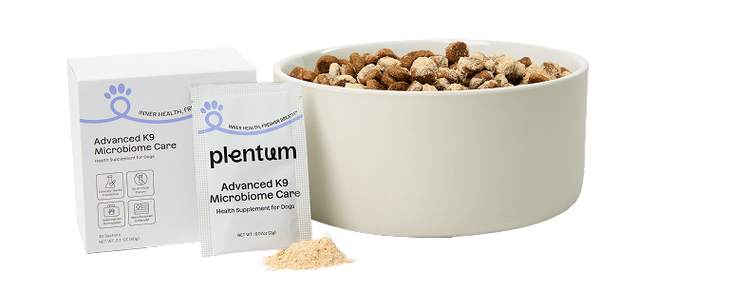Pet owners across the globe now choose glucosamine and chondroitin supplements as their preferred natural remedy for their dogs' joint health issues. However, the effectiveness of these supplements for dog joint and bone health remains uncertain. The market popularity of these supplements has not proven their effectiveness for canine joint health according to scientific evidence.
Understanding Joint Health in Dogs
Millions of dogs worldwide suffer from joint problems which become more common during their senior years. The combination of osteoarthritis and hip dysplasia and joint degeneration creates severe health problems for dogs because it leads to chronic pain and reduced movement and decreased physical activity.
The cartilage tissue in joints functions as a protective layer which enables bones to move smoothly. The breakdown of cartilage at a rate exceeding its repair process leads to the development of joint problems. The supplements glucosamine and chondroitin become relevant at this point.
What Are Glucosamine and Chondroitin?

Glucosamine exists naturally in healthy cartilage tissue as a substance which the body produces. The substance functions as a building block for cartilage and helps maintain the viscosity of joint fluid. The supplement form of glucosamine comes from shellfish shells or laboratory-made synthesis.
The natural cartilage component chondroitin sulfate functions to preserve cartilage structure and blocks enzymes which degrade cartilage tissue. Commercial chondroitin products derive from bovine, porcine or marine cartilage sources.
The combination of these supplements works together because glucosamine supplies materials for cartilage restoration and chondroitin protects existing cartilage from deterioration.
The Scientific Evidence: Mixed Results

The veterinary community remains divided about glucosamine and chondroitin effectiveness for dogs because research produces conflicting outcomes.
Supporting Evidence:
- Research indicates that dogs with arthritis experience better mobility and reduced pain symptoms when treated with these supplements.
- Some clinical trials demonstrated that dogs experienced reduced lameness and enhanced activity performance.
- Veterinarians have documented that some dogs show noticeable signs of improvement.
Conflicting Evidence:
- Multiple controlled studies demonstrated that glucosamine/chondroitin supplements produced no better results than placebo treatments.
- The absorption rate of oral supplements remains uncertain because digestion processes might destroy most of the compound.
- Each dog shows a different reaction to these supplements.
Study Limitations:
- The majority of research studies contain limited participant numbers.
- The assessment of dog pain and mobility remains challenging because it depends on subjective evaluations.
- The way owners perceive their pets' condition through observation creates placebo effects which affect study outcomes.
Benefits and Safety Profile

Potential Benefits:
- The supplements help dogs experience mild to moderate pain relief in certain cases.
- These supplements show a good safety profile with rare adverse reactions.
- The supplements may help reduce cartilage deterioration when used during the initial stages of arthritis.
- The supplements help enhance the quality of joint fluid.
Safety Considerations:
- Most dogs tolerate these supplements without adverse reactions.
- The digestive system of sensitive animals occasionally experiences minor adverse reactions.
- Blood-thinning medications may interact with these supplements.
- Different manufacturers produce products with varying levels of quality.
Important Limitations
- The full effects of these supplements become noticeable after a minimum period of 6-8 weeks.
- These supplements do not work for every dog.
- The supplements cannot reverse existing severe joint damage.
- These supplements should not replace established medical treatments for severe health conditions.
Expert Veterinary Perspectives
Veterinarians approach glucosamine and chondroitin supplements with caution when recommending them to their patients. The supplements function best when used as part of a complete joint health management plan according to veterinary professionals.
Veterinary Recommendations:
- Choose pharmaceutical-grade supplements which have undergone third-party verification for purity.
- The treatment plan should include NSAIDs together with proven medications when necessary.
- Pet owners should maintain practical expectations about the treatment outcomes.
- The veterinarian should track dog responses during a period of 2-3 months.
Alternative and Complementary Approaches

-
Weight management stands as the essential factor for maintaining joint health.
-
Swimming along with other low-impact exercises should be part of your dog's regular physical activity.
-
Physical therapy includes specific exercises and stretching routines.
-
Prescription medications: NSAIDs and other proven treatments
-
Omega-3 fatty acids demonstrate strong evidence for their anti-inflammatory properties.
Making an Informed Decision

Consider these factors:
- The age of your dog along with the extent of their medical condition.
- Current treatment regimen.
- Budget considerations.
- Realistic timeline expectations.
Red Flags to Avoid:
- The products which promise excessive treatment success.
- Supplements that lack third-party verification.
- Not consulting veterinary professionals for serious medical conditions.
- The expectation of fast results from treatment.
The Bottom Line
Glucosamine and chondroitin supplements exist as a moderate solution for canine joint health management. The supplements offer limited advantages to specific dogs who start taking them during the early stages of joint disease progression. The key to successful joint health management involves understanding realistic outcomes from supplements while using them as part of a complete joint care plan. Weight management together with proper exercise and veterinary-prescribed treatments form the essential foundation for successful joint care of dogs.
Always consult with your veterinarian before beginning any supplement program to verify its safety for your dog's medical needs and prevent interactions with current treatments.
The most effective approach involves proven methods while glucosamine and chondroitin supplements can serve as additional support for your dog's joint health program but should not replace the primary joint care measures.
Here are key scientific references that support the information in the article:
-
Vandeweerd, J.-M., Coisnon, C., Clegg, P., Cambier, C., Gustin, P., Van Galen, G., … Saegerman, C. (2012). Systematic review of efficacy of nutraceuticals to alleviate clinical signs of osteoarthritis. Journal of Veterinary Internal Medicine, 26(3), 448–456.
https://pubmed.ncbi.nlm.nih.gov/22504640/
-
McCarthy, G., O’Donnell, P., McNamee, P., Jones, B., Bell, A., & O’Neill, D. (2007). Randomised double‐blind, positive‐controlled trial to assess the efficacy of glucosamine/chondroitin sulfate for the treatment of dogs with osteoarthritis. Veterinary Record, 161(3), 75–78.
https://pubmed.ncbi.nlm.nih.gov/17696687/
-
Moreau, M., Oswald, I. P., & Freiche, V. (2003). Efficacy of glucosamine and chondroitin sulfate supplementation in dogs with hip osteoarthritis. American Journal of Veterinary Research, 64(7), 1029–1034.
https://pubmed.ncbi.nlm.nih.gov/12838725/
-
Lascelles, B. D. X., McFarland, J. M., Swann, H. J., James, I. E., & Downton, M. (2010). Development and preliminary evaluation of a client‐based clinical metrology instrument for osteoarthritis in dogs. Journal of the American Veterinary Medical Association, 237(11), 1275–1281.
https://pubmed.ncbi.nlm.nih.gov/21053530/
-
Wynn, S. G., Fiechtner, J. C., Ipaktchi, K., & Riegel, C. P. (2014). Guidelines for safe use of nutraceuticals in dog and cat patients: complementing conventional protocols. Journal of the American Animal Hospital Association, 50(2), 66–77.
https://pubmed.ncbi.nlm.nih.gov/24646212/
-
Conzemius, M. G., & Lascelles, B. D. X. (2005). Medical management of osteoarthritis in dogs. Veterinary Clinics of North America: Small Animal Practice, 35(4), 1135–1162.
https://pubmed.ncbi.nlm.nih.gov/16221543/
-
Nielsen, D. A., Shofer, F. S., & Lund, E. M. (2007). Evaluation of the efficacy of carprofen, glucosamine–chondroitin sulfate, and their combination for treatment of osteoarthritis in dogs. Journal of the American Veterinary Medical Association, 231(6), 885–890.
https://pubmed.ncbi.nlm.nih.gov/17903640/











